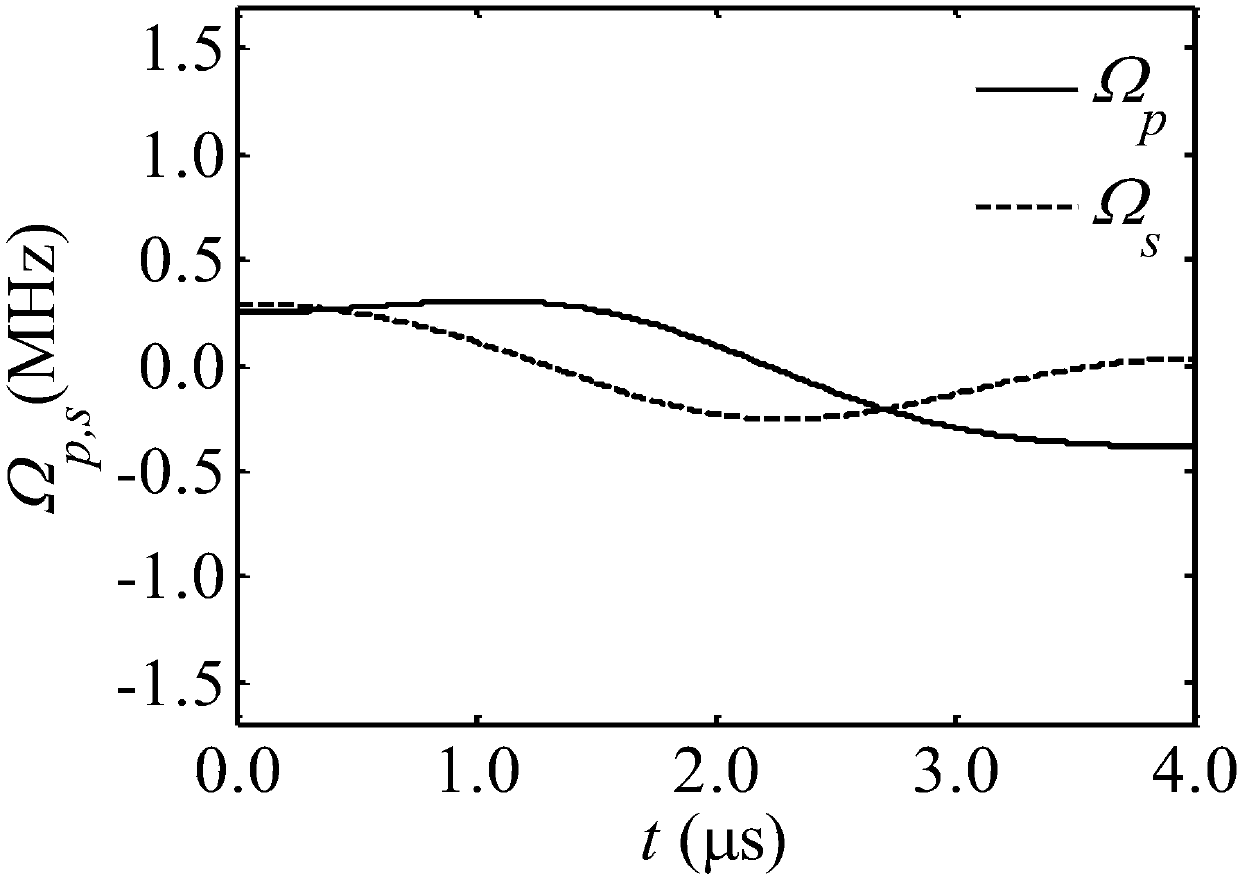Optical pulse generating method capable of creating three-energy-level system quantum bit random superposition state
A quantum bit, optical pulse technology, applied in the field of optical pulse, can solve the problems of long pulse action time and poor robustness
- Summary
- Abstract
- Description
- Claims
- Application Information
AI Technical Summary
Problems solved by technology
Method used
Image
Examples
Embodiment 1
[0033] An optical pulse generation method that can create arbitrary superposition states of qubits in a three-level system, according to the initial state |1> and the target state of the system where θ a In the range [0, π], Take the value in the range of [0, 2π], use the adiabatic shortcut technology based on the Lewis-Riesenfeld invariant theory to reversely solve the time-dependent Schrödinger equation of the three-level system to obtain the amplitude and phase of the two optical pulses, and input the amplitude and phase The arbitrary wave generator generates a radio signal with the same amplitude and phase as the optical pulse, and uses this radio signal to drive the acousto-optic modulator in the continuous laser optical path to obtain +1 or -1 deflected output light, generating a set of two-color optical pulses;
[0034] Where: the driving frequency of the acousto-optic modulator is f aom , the laser frequency in the continuous laser path is f laser , the qubit is c...
Embodiment 2
[0053] The optical pulse generation method that can create any superposition state of the three-level system qubit based on the first embodiment, all a in the formula (4) n The values are all zero. at this time:
[0054]
[0055] Based on this γ(t) and β(t) shown in formula (5), the Rabi frequency of the light pulse generated by formulas (2) and (3) can be found in the attached figure 2 , where the solid line is Ω p , the dotted line is Ω s , the pulse action time is 4μs, the start and end values of the Rabi frequency are not equal to zero, and the maximum instantaneous Rabi frequency does not exceed 0.5MHz.
[0056] attached image 3 is the evolution of the quantum state |ψ(t)> with time during the interaction between the pulse and the detuned quantum system. At the initial moment, the quantum state is in the |1> state; at the end of the pulse, that is, t=4μs, the probability of the quantum state in both |0> and |1> is 50%, which is the same as the target state ...
Embodiment 3
[0060] The optical pulse generation method that can create any superposition state of qubits in the three-level system based on the first embodiment, a in formula (4) n All even and odd terms of satisfy the following two conditions respectively:
[0061] a 1 +3a 3 +5a 5 +7a 7 = 0,
[0062] a 2 +2a 4 +3a 6 +4a 8 =-0.5.
[0063] Then the Rabi frequency of the two light pulses at the initial and final moments is zero, that is, Ω p,s (t=0,tf)=0. By any a that satisfies these two relations n Substituting the value into (4), the constructed light pulse can manipulate the quantum system to create the target state |ψ target >, here in the simplest case a 2 =-0.5, a 1.3.4.5.6.7.8 =0 as an example to illustrate the shape of the light pulse and its working performance.
[0064] attached Figure 4 , is the Rabi frequency of the two-color light pulse in this embodiment, and the values at the initial and termination moments are both zero, avoiding the existence of multiple...
PUM
 Login to View More
Login to View More Abstract
Description
Claims
Application Information
 Login to View More
Login to View More - R&D Engineer
- R&D Manager
- IP Professional
- Industry Leading Data Capabilities
- Powerful AI technology
- Patent DNA Extraction
Browse by: Latest US Patents, China's latest patents, Technical Efficacy Thesaurus, Application Domain, Technology Topic, Popular Technical Reports.
© 2024 PatSnap. All rights reserved.Legal|Privacy policy|Modern Slavery Act Transparency Statement|Sitemap|About US| Contact US: help@patsnap.com










